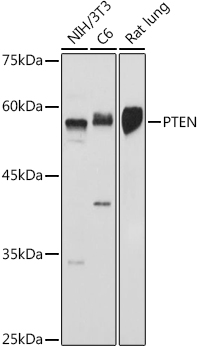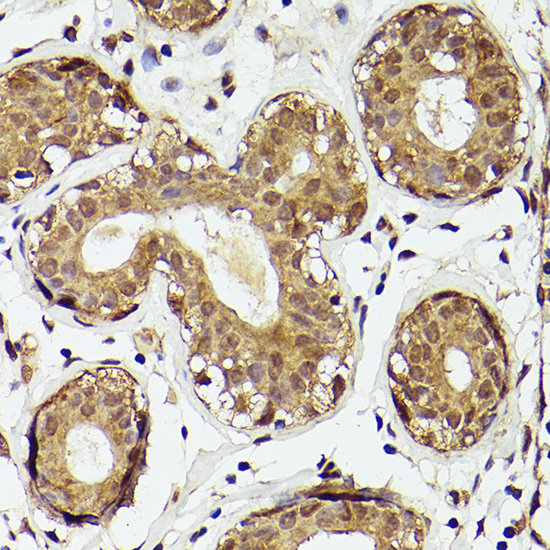PTEN Polyclonal Antibody
For reference only. Please follow the manual included in your kit for instructions.
Catalog Number
RD90056A
Product Name
PTEN Polyclonal Antibody
Catalog Number
RD90056A
Clonality
Polyclonal
Purification Method
Affinity purification
Isotype
IgG
Host
Rabbit
Background
This gene was identified as a tumor suppressor that is mutated in a large number of cancers at high frequency. The protein encoded by this gene is a phosphatidylinositol-3,4,5-trisphosphate 3-phosphatase. It contains a tensin like domain as well as a catalytic domain similar to that of the dual specificity protein tyrosine phosphatases. Unlike most of the protein tyrosine phosphatases, this protein preferentially dephosphorylates phosphoinositide substrates. It negatively regulates intracellular levels of phosphatidylinositol-3,4,5-trisphosphate in cells and functions as a tumor suppressor by negatively regulating AKT/PKB signaling pathway. The use of a non-canonical (CUG) upstream initiation site produces a longer isoform that initiates translation with a leucine, and is thought to be preferentially associated with the mitochondrial inner membrane. This longer isoform may help regulate energy metabolism in the mitochondria. A pseudogene of this gene is found on chromosome 9. Alternative splicing and the use of multiple translation start codons results in multiple transcript variants encoding different isoforms.
Immunogen Information
Immunogen
Recombinant fusion protein of human PTEN
Gene ID
5728
Swissprot
P60484
Synonyms
10q23delBZSCWS1DECGLM2MHAMMMAC1PTEN1TEP1PTENPTENbeta
Calculated MW
39kDa/41kDa/52- 82kDa/150kDa
Observed MW
200KDa
Applications
Reactivity
Human,Mouse,Rat
Tested Applications
WB,IHC,IF
Conjugation
Unconjugated
Dilution
WB 1:500-1:2000,IHC 1:50-1:200,IF 1:50-1:200
Concentration
1mg/mL
Storage Buffer
PBS with 0.05% proclin300,50% glycerol,pH7.3.
Storage Instructions
Store at -20°C Valid for 12 months. Avoid freeze / thaw cycles.


